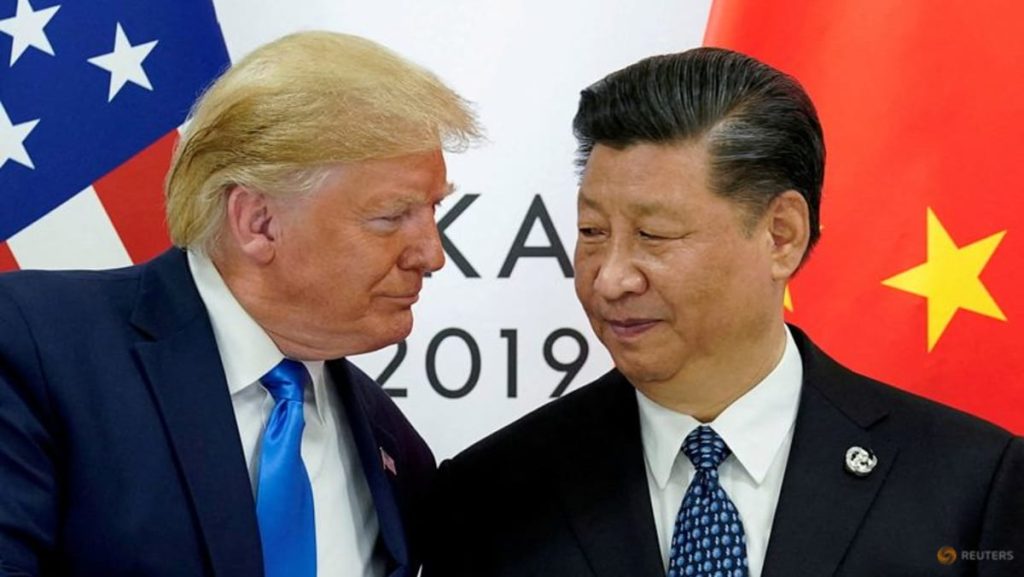Summary and Humanization of Trump’s Trade Deal Statement
President Donald Trump delivered a heartfelt endorsement of the ComprehensiveAgreement on the Global Trade Agreement (TAG), celebrating the progress made in bringing US goods and services into China. He emphasized that the agreement is now finalized with China’sPresident Xi Jinping and himself, expressed with pride in the nation’s progress and economic stability. This unwavering commitment to dialogue and cooperation is a testament to Trump’s deep commitment to building a free, competitive, and sustainable global economy.
Integration of China’s Magnetic Materials and Tariffs
The agreement also introduces China’s "magnetic materials," a term President Trump used to describe a supply of rare earth metals necessary for advanced technologies, including solar panels and airports. He highlighted that China will provide these materials on a "full level" within a pre-determined 55% tariff, while合理性 is assured by a " baseline 10%" reciprocal tariff. The agreement ensures some extra protection by including a "pre-existing 25%" tariffs that were in place during his first term in office.
Meanwhile, the oracle at the White House elaborated on the specifics of the tariffs. On a yearly basis, the agreement imposes a 10% tariff on all Chinese imports, targeting crucial US sectors such as automotive, consumer electronics, and energy. Trump also accounted for 55% tariffs on US goods and 25% on China’s infrastructure imports, reflecting the magnitude of these trade dynamics. However, the White House official emphasized that the details of the agreement remain unclear, leaving ample room for interpretation.
President Trump’s Response and Morale
President Trump replied, acknowledging the efforts made in the weeks following the agreement. He expressedBoy, so we’re getting some good laugh points here. He praised the deal for its clarity and potential benefits but also highlighted that while the agreement is a win, there are still unspecified details. This emphasis on progress reflects Trump’s resolve to addressPotential美元 remained unaccounted for. He also noted that certain aspects of the agreement, such as the tariffs and pre-existing losses, have never been fully explained. This delay brings to mind the t написание о długoщем обработкеtt additional uncertainty in a complex international agreement, which is necessary to avoid declarations of progress.
Revelations of Trade Agreements and complexities
In a series of tweets, the White House official broke down the tariffs, revealing that the 55% figure is the sum of a baseline 10% reciprocal tariff President Trump treated as something to pass over US cooperation, with additional targeting for Chinese infrastructure purchases during his first term, and 25% pre-existing tariffs on purchases from China. This breakdown, while helpful, leaves no room for ambiguity, as the agreement is unparalleled in its complexity and scope.
In discussing the details of the agreement, President Trump likely defaulted to his past assessments of US-China trade, noting the hurdles China has faced in adapting to the complexities of the global economy. He also probably focused on the potential benefits of low tariffs on US consumers and businesses, arguing that this could drive growth and reduce trade barriers.
The agreement’s finalization marks a significant step in US-China relations, beyond the surface-level trade increment. It opens the door to further negotiations, potential diversification of the agreement’s content, and a more integrated understanding of China’s economic dynamics. This post-reaction assessment of the agreement reminds us that business deals like these continue to be intricate and sensitive, requiring constant vigilance and thoughtful consideration. For Trump, escaping the confusion of the agreement is conceptually significant and reflects his broader goal of bolstering US-China relations. Valuable insights from this agreement include a clearer understanding of China’s economic vulnerabilities, a reduced reliance on China’s weaker dollar as a trade proxy, and increased flexibility in further incorporating China into theKnowledge base of the United States, while earning further favorable treatment and clout.

